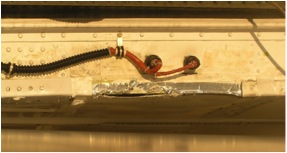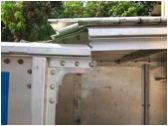Basics, Cargo Terminals, Freight Forwarders, CARE, Ground Handlers, ULD Service providers
ULD and Limitations
While we may not be aware of them, we all have limitations; how fast we can run or how much we can carry to mention just two. Any kind of engineered product also has its limitations.
For example, your car will only be able to travel at a certain maximum speed and only carry a maximum number of people. Limitations are a fact of life, they exist all around us all the time and for most of the time, we take them for granted, instinctively knowing where the limits lie.
Aviation is of course no exception. There are multiple limitations concerning aircraft, for instance how much load it can carry, how high it can fly, how long it needs to take off, etc. The list is almost endless. And, in aviation, a very strict recognition of these limitations is extremely important because a failure to observe them can lead to catastrophic consequences.
ULD also have limitations. The question however is do people even know that ULD have limitations, how aware are they of these limitations and, even if they are aware, do they respect these limitations or simply ignore them? Life of course would be very simple if no limits applied to anything. It would seem perhaps that there is something of this in air cargo operations where, for much of the time, it is assumed that there is no kind of limitations applicable to ULD. That way, everything is nice and simple for everybody, all the time.
How wrong can this be! As anybody involved in the design and certification of both the ULD and the aircraft will tell you, there are very clear and unbreakable limitations surrounding ULD operations. Failure to observe these limitations can lead to extremely unpredictable and potentially catastrophic effects.
So how are we supposed to know about these limitations a typical user of ULD might ask, where do we learn about them?
Well, a good starting point would be the IATA ULD Regulations, where section 2 provides a comprehensive coverage of limitations as they apply to ULD operations. Familiarization with the contents of this section is absolutely essential for anybody having responsibilities around ULD operations. The operator of the aircraft has to be able to assume that when a ULD is being loaded onto the aircraft, it is in every respect within its limitations.
Space does not permit a detailed examination of every possible limitation. We refer our readers to the IATA ULD Regulations, the various aircraft weight and balance manuals and the ULD manufacturers’ component maintenance manuals for specific details of each and every limitation. This article can only serve to highlight a few of the most commonly occurring limitations, those which an operator may come up against in day-to-day air cargo operations:
|
Limitation |
Definition |
Implication of exceeding limit |
|
Maximum Gross Weight |
The nominal maximum loaded weight of any ULD. |
If a ULD is loaded beyond its maximum gross weight it may fail to restrain the cargo as required during flight operations, and is therefore unsafe for use. It must always be noted with great care that regardless of the maximum gross weight that the ULD can carry the aircraft position where the ULD will be located will have its own limitation which may be less and can even be slightly higher, the aircraft limitations will always take precedence. |
|
Maximum Contour |
The maximum external dimensions of any ULD whether a container or a pallet and net. |
The contour dimensions are very precisely defined so as to ensure that the ULD were loaded into the aircraft will be able to fit into its allocated position without coming into contact with the aircraft structure or any other ULD. There are very precise requirements for the amount of space that must be maintained between the ULD and the aircraft structure, if the maximum contour is exceeded this space will no longer be maintained, this can lead to both damage to the aircraft and/or a reduction of the correct airflow inside the cargo hold. |
|
Maximum Area load |
The maximum mass per square foot ( square meter) that the aircraft floor/ULD can withstand |
The aircraft floor is a precision engineered structure, any excess of concentrated mass in one location can cause damage to this structure, both endangering the safety of the aircraft and leading to expensive and extensive repairs to the aircraft. Furthermore certain types of ULD, most specifically 16 and 20 foot pallets have specific maximum area load limitations for the ULD structure, and will be damaged when this is exceeded. |
|
Maximum Linear |
The maximum mass, measured along the length of the aircraft. |
The structure of the aircraft floor is such that any excess concentration of mass over too short a distance along the aircraft can result in damage to the aircraft structure. |
|
Maximum centre of gravity offset |
The distance that the effective centre of gravity of a loaded ULD may be offset from the geometric centre of the ULD base. |
Any item has a centre of gravity. In a loaded ULD the centre of gravity will depend on a number of factors, positioning of heavier items, the overall height of the load, the symmetry of the positioning of the load, and the shape of the ULD. When loaded the centre of gravity of the ULD shall not exceed a certain maximum height above the base and shall also not be more than a certain distance from the centre of the base. If these limits are exceeded then under severe loads unequal forces will occur on the aircraft locking system which might fail. |
|
Maximum allowable damage of a ULD |
The maximum amount of damage that ULD can have accumulated and still remain airworthy. |
Any ULD will have established limitations for damage, once these limitations are exceeded the ULD is no longer airworthy and may not be utilized. These limitations may be found on the Operational Damage Limit Notice attached to many ULD or alternatively in the airlines operating instructions. Failure to observe these limitations can result in a non-airworthy and unsafe ULD being carried in flight. |
|
Maximum durability of a ULD |
The maximum force applied to any particular component of the ULD before damage will occur |
ULD are lightweight structures and every component has limitations to its strength, once a force exceeding this limit occurs something will bend and ultimately break. Every material has its limitations, there is no such thing as an unbreakable material. |
|
Maximum strength of packaging materials |
The capability of any item of packaging used in an air cargo shipment to contain its contents during flight conditions |
Every item being sent by air cargo shall be packed in such a manner that it cannot break loose or otherwise become insecure during flight |
|
Maximum weight of any single item |
Any single item weighing over 150 kg requires special attention |
When any item weighing over 150 KG is loaded into a certified container then either that container must be at least 75% loaded or the item shall be restrained using cargo straps. On an noncertified container no item exceeding 150 KG may be loaded |
To those parties unfamiliar with aircraft and ULD operations these limitations may seem to be quite challenging. Surely cargo loading and ULD operations cannot be this complicated? But yes they are, and these limits are there for very good reasons because without them, safety will be compromised and/or the aircraft damaged.
As we said at the opening of this article, everything around us has its limitations and ULD are no exception. It is the intention of this article to throw sufficient light on this vitally important subject for our readers to understand that limitations play a very important part in every aspect of ULD operations. Safety is everybody’s concern and knowledge of limitations is an essential foundation.
 |
 |
||
|
Damage to a 737F cargo door caused by ULD having an incorrect contour hitting the door frame. |
Damage to a ULD caused by handling which exceeded the strength limit of the ULD. |
||
 |
 |
||
|
Loaded ULD whose contour limitation has been exceeded; the load is resting against the side of the aircraft hold, which is an unacceptable condition. |
An item of cargo, a cylindrical pipe, which is exceeded the limits of its packaging material and has broken loose passing through the rear pressure bulkhead of the aircraft narrowly missing safety critical flight controls. |


